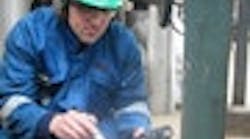Loss of steam through steam traps accounts for significant energy waste at many plants. Quantifying the extent of the loss often poses difficulties. Indeed, to date, no simple-to-use predictive tool can accurately estimate the actual rates of lost steam as a function of steam line pressure and saturation temperature of sub-cooled condensate. Here, however, we present an accurate and reliable method that requires fewer computations than conventional approaches.
ALIREZA BAHADORI is a postgraduate student in the School of Chemical and Petroleum Engineering, Curtin University, Perth, Australia. HARI B. VUTHALURU is an associate professor in the School of Chemical and Petroleum Engineering, Curtin University, Perth, Australia. E-mail them at [email protected] and [email protected].
NOMENCLATUREA -- Tuned coefficienta -- CoefficientB -- Tuned coefficientb -- CoefficientC -- Tuned coefficientc -- CoefficientCV -- Flow capabilityD -- Tuned coefficientd -- CoefficientFC -- Corrected flow factorP -- Trap inlet pressure or steam line pressure, kPa (abs) Q -- Condensate flow rate, kg/hQC -- Catalog flow rating of trap, kg/hSA -- Actual steam loss, kg/hT -- Temperature, K

